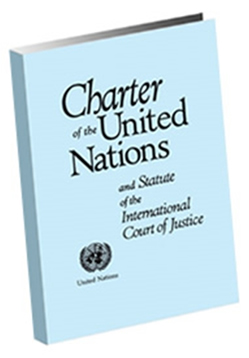
|
|
Treaty interpretation basics
THREE BASIC STEPS
The major steps for interpreting international treaties and documents created under them are:
1. Ensure you have the treaty in force at the time relevant to your problem and that it has been ratified by the country you are considering and actually entered into force.
Normally, a country is only bound by a treaty if it has ratified the treaty. When a treaty is created it is normally signed by the parties to it but they are only bound following later "ratification" by their governments of the terms of the treaty. This is the step where a country formally agrees to be bound by the treaty. A diagram of the normal process for creating treaties is available here.
The procedure for ratification varies from country to country. In Australia and the UK, treaty ratification is a Royal Prerogative exercised by the Executive Government alone and does not require the approval of Parliament; however, by convention treaties are usually placed before parliament for 21 days before ratification. In the USA, the President may negotiate and sign a treaty, but the treaty must be consented to by a two-thirds vote in the US Senate. Only after the Senate approves the treaty can the President ratify it.
The text of most treaties is rarely altered but you need to ensure that this is the case. Normally, the treaty in force will be the current version of the treaty available on official websites but if your problem involves something that occurred in the past the treaty in force at that time may apply.
The treaty should be obtained from its official website (e.g. www.ramsar.org). There is normally a rich supply of relevant documetns on such sites and details of the states that have ratified the treaty. If there is no official website, obtain the treaty and ratification details from the United Nations Treaty Collection or other governmental site or published treaty series (e.g. the Australian Treaty Series).
2. Skim-read the whole treaty and indentify the parts relevant to your problem.
You might find it useful in this step to read the table of contents and note the headings in a list on a single page so that you can see a simplified structure of the whole document.
3. Interpret the parts of the treaty relevant to your problem in good faith in accordance with the ordinary meaning to be given to the terms of the treaty in their context and in light of its object and purpose and any subsequent agreement by the parties.
This is the main rule for interpreting international treaties under customary international law. It is recognised in Article 31 of the Vienna Convention on the Law of Treaties 1969.
When interpreting a treaty you must pay particular attention to terms defined in the treaty as well as terms defined by subsequent agreement between the parties.
If a term is not defined in the treaty or in a subsequent agreement or decision of the parties made under the treaty, the “ordinary meaning” is the definition of words found in a normal dictionary (e.g. the Oxford English Dictionary) and applying normal rules of grammar.
The parties to the treaty may make subsequent agreements about the operation of a treaty and the meaning of particular terms. For instance, the parties to the World Heritage Convention have agreed on operational guidelines to the treaty that define important terms in the treaty such as the meaning of "outstanding universal value." You should check for such agreements and documents, which are normally available on the treaty's main website.
These three rules will solve the vast majority (>95%) of questions regarding the interpretation of international agreements. Treaty interpretation, however, can be very complex and you should recognize your limits and seek professional advice if necessary.
OPTIONAL ADDITIONAL STEP
While not necessary for most problems, as an optional additional step for non-lawyers, you can:
4. Search for decisions of international bodies, courts and tribunals interpreting and applying the treaty in question, particularly the parts relevant to your problem.
International treaties are rarely the subject of litigation and there are few decisions of international bodies, courts and tribunals in the vast majority of cases.
However, for some treaties there are important bodies for resolving disputes between the parties such as the World Trade Organisation for international trade disputes.
This additional step can be difficult and is not essential for non-lawyers. In the vast majority of cases you will either find no relevant decisions or decisions that merely affirm the plain meaning arrived at in the three steps set out above.
RECOGNISE YOUR LIMITS
You can have confidence that the three main rules give above will resolve 95% of problems involving treaty interpretation, but you should recognise that a small percentage of problems will be more difficult. For such difficult problems, international lawyers will often disagree or be unable to give a definitive answer. A definitive answer might not be possible where the parties to the treaty dispute its obligations and refuse to submit to the jurisdiction of an international court or tribunal to resolve the dispute.
Allow for more difficult cases and, if something is unclear, recognise it in your use of the treaty.
A PDF version of this page is available here.
